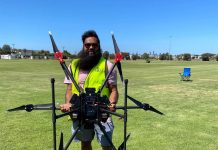- Final reserve and contingency fuel requirements for a Part 91 IFR flight (piston <5,700kg MTOW) are?
- 30 minutes final reserve fuel only
- 45 minutes final reserve fuel only
- 30 minutes final reserve fuel and 5% of trip fuel for contingency
- 45 minutes final reserve fuel and 5% of trip fuel for contingency
- Final reserve and contingency fuel requirements for a Part 91 IFR flight (piston >5,700kg MTOW) are?
- 30 minutes final reserve fuel only
- 45 minutes final reserve fuel only
- 30 minutes final reserve fuel and 5% of trip fuel for contingency
- 45 minutes final reserve fuel and 5% of trip fuel for contingency
- Civil IFR flights entering Class E airspace, unless otherwise advised by ATC must squawk which code?
- 1200
- 2000
- 3000
- 4000
- A communications failure while on an assigned heading in controlled airspace, requires which of the following actions in IMC?
- squawk 7600
- maintain last assigned vector for 2 minutes
- listen out on ATIS and/or voice modolated NAVAIDS
- all of the above
- An IFR flight departs an aerodrome that is CAVOK, and is in VMC when a radio failure occurs. The forecast is for IMC conditions further enroute. The most suitable course of action is:
- proceed as per the flight plan to the destination, and comply with the radio failure procedures
- if the flight is planned to remain outside controlled airspace, proceed to the destination
- if the flight is in controlled airspace, fly to an aerodrome with maintenance facilities
- if the aircraft is certain to maintain VMC, remain in VMC and land at the most suitable aerodrome
- On a radar heading, IMC in Class A airspace, ATC have cleared you to descend to an altitude below the LSALT. If a radio failure occurs, you must:
- maintain the assigned heading for 3 minutes and not change level
- descend to the assigned altitude and maintain it for 3 minutes
- not descend below the LSALT and maintain that altitude for 3 minutes
- climb until you are in VMC
- Can an aircraft be operated under the IFR without an approved GNSS?
- yes
- no
- You are IFR in Class E airspace and your GNSS fails navigating between 2 VOR aids. Your flight notification has indicated the aircraft is capable of RNP2. Does ATC require notification?
- yes
- no
- The VOR for the aerodrome you are approaching is reported (by NOTAM) as being out of service for the time of your arrival. Your aircraft is approved for RNP2 operations. Can GNSS information be used as an alternative to the ground-based navigation aid (VOR) in conducting an approach?
- yes
- no
- For the enroute phase of flight, GNSS information may be used as an alternative to a ground-based navigation aid under what conditions?
- no restrictions apply if above LSALT
- the aircraft is approved for RNP 5 operations
- the aircraft is approved for RNP 2 operations
- the aircraft is approved for RNP 1 operations
- 1Your aircraft has an unserviceable pitot heat to the single airspeed indication system, with no other means of preventing malfunction due to condensation or icing. Can it be operated IFR?
- yes
- no
- For a single-pilot IFR flight with an inoperative loudspeaker, what communication requirements apply?
- two headsets and microphones that are not of a hand-held type must be carried
- only a single headset is required
- a single headset is required if the aircraft has HF and VHF radios fitted
- only a single headset is required if a backup communication device or mobile phone is carried
- You are preparing to depart IFR from a CLASS D aerodrome, into CLASS C airspace. You have requested an airways clearance. Due to IMC conditions and heavy traffic in the overlying CLASS C airspace, ATC advises a significant delay before being able to depart. You request a Special VFR clearance to circumvent the delay. ATC issues the clearance and you prepare to depart. What conditions must you adhere to when operating under a Special VFR clearance?
- remain clear of cloud and in-flight visibility not less than 2,000 m
- maintain 200-feet clearance from cloud and in-flight visibility of not less than 1,500 m
- remain clear of cloud and in-flight visibility of not less than 1,600 m
- remain clear of cloud and in-flight visibility of not less than the circling visibility minima
- During a departure from a CLASS D aerodrome and operating under a Special VFR clearance, ATC will provide clearance from what flights?
- IFR flights
- IFR and VFR flights
- Special VFR flights
- Special VFR flights when the visibility is less than VMC
- Can ATC vector Special VFR flights under normal conditions?
- yes
- no
- You have planned a flight to a destination aerodrome that has a predicted loss of GNSS integrity for 10 minutes, which starts at your planned arrival time. Your aircraft is equipped with an approved GNSS receiver that can achieve a LNAV accuracy of less than 0.3 nm using requisite satellites. Are you required to provide for an alternate or delay your departure time?
- yes
- no
To view the answers, go to the next page using the page navigation buttons below.




